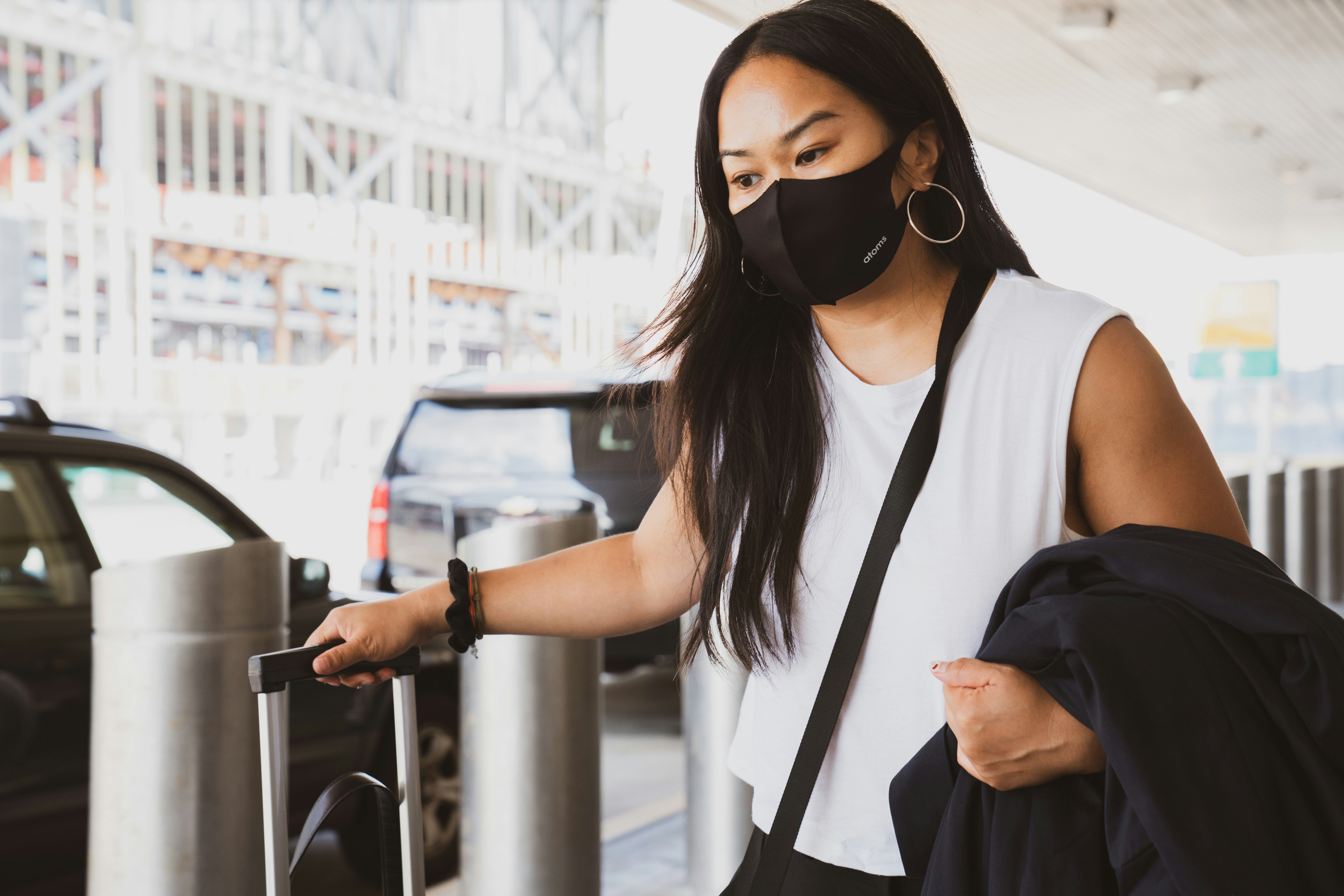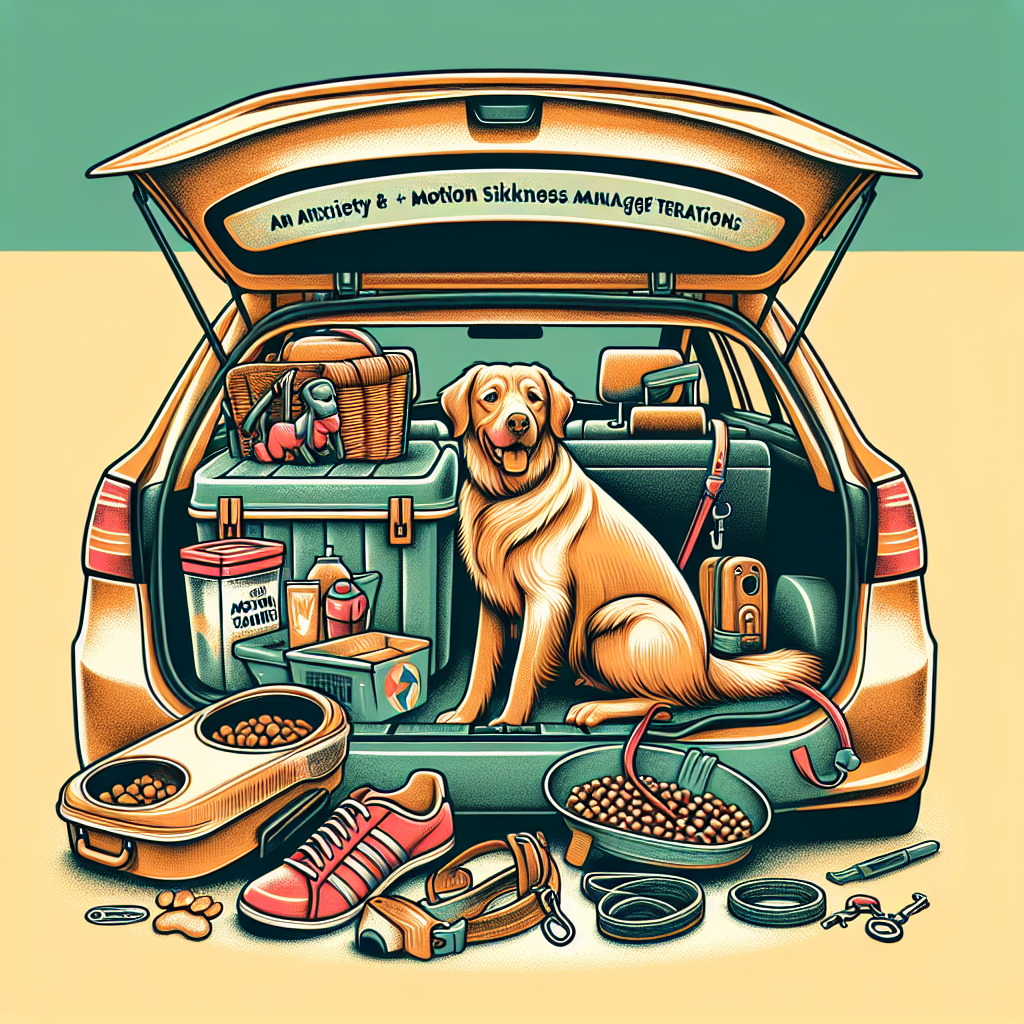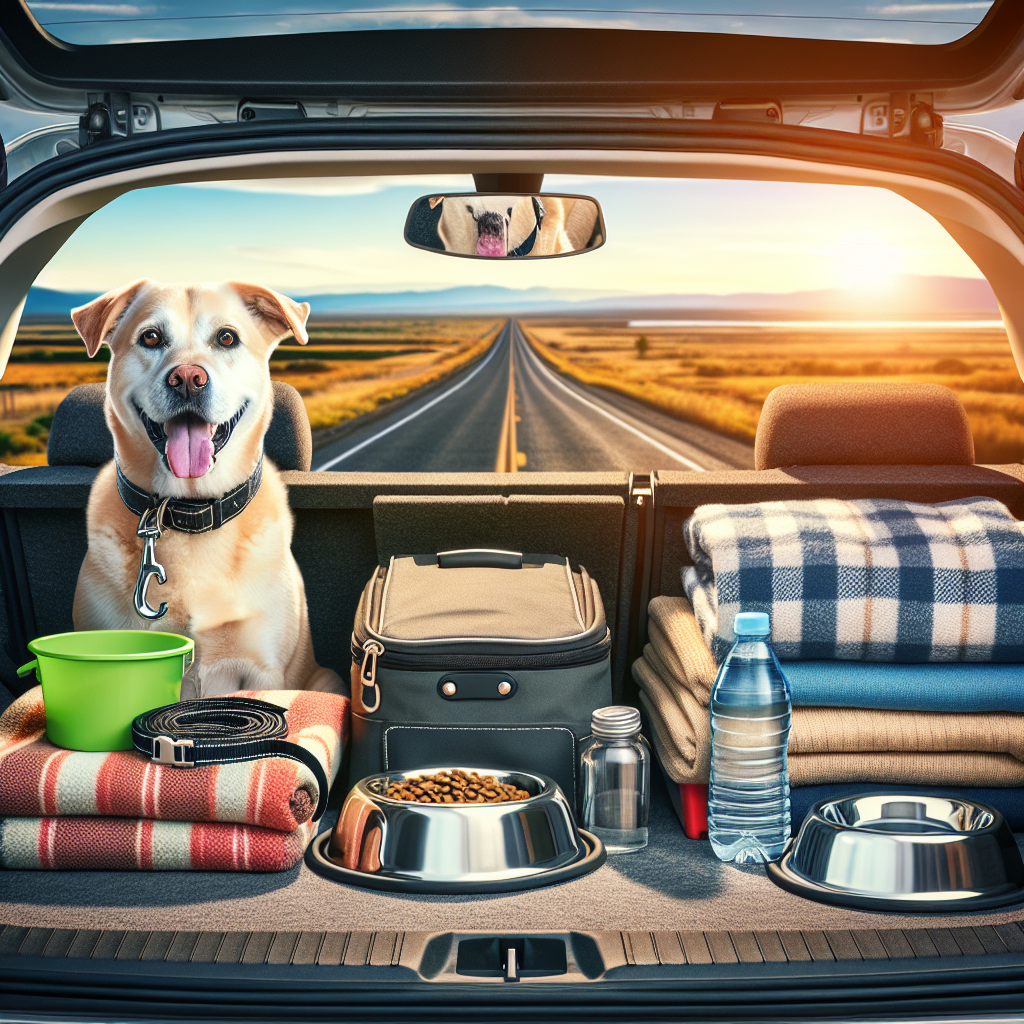If you’re gearing up for an exciting adventure on the open road with your furry friend, it’s essential to ensure that your dog is properly prepared for the journey ahead. From packing essential supplies to making necessary arrangements, taking the time to plan ahead will help ensure a safe and comfortable trip for both you and your four-legged companion. Whether it’s their first time or they’re already a seasoned traveler, this article will provide you with valuable tips on how to prepare your dog for a long road trip, ensuring a paw-some experience for everyone involved.
Choosing the Right Vehicle
When preparing for a road trip with your dog, it’s essential to choose the right vehicle that will accommodate both you and your furry friend comfortably. Consider the size and breed of your dog when selecting a vehicle. If you have a small or medium-sized dog, a compact car should be sufficient. However, if you have a larger breed, such as a Labrador or a German Shepherd, you’ll need a vehicle with ample space, such as an SUV or a minivan. This will allow your dog to move around freely without feeling cramped.
Ensure proper ventilation in the vehicle. Dogs can easily overheat, especially during long car rides. Make sure your car has working air conditioning or openable windows that provide sufficient airflow. This will help regulate the temperature inside the vehicle and keep your dog cool and comfortable throughout the journey.
Provide a comfortable space for your dog in the vehicle. Just like humans, dogs need a cozy spot to relax during a road trip. Consider investing in a dog car seat or a travel bed specifically designed for pets. These provide a comfortable and secure place for your dog to rest during the journey. Additionally, you can use blankets or cushions to make their space even more inviting. Creating a safe and comfortable environment for your dog will ensure a stress-free and enjoyable road trip for both of you.
Getting Ready for the Trip
Before hitting the road, it’s essential to schedule a visit to the vet. A thorough check-up will ensure your dog is in good health and ready for the trip. Your vet can provide any necessary vaccinations or medications that may be required, such as flea preventatives or motion sickness medication. They can also offer valuable advice on how to keep your dog comfortable and calm during the journey.
Update your dog’s identification and microchip information. In case of an unfortunate event where your dog gets lost during the trip, it’s crucial to have updated identification tags and a microchip with accurate contact information. This will increase the chances of a successful reunion should your beloved companion wander off.
Pack all necessary documents and medications for your dog. This includes their health records, vaccination certificates, and any prescriptions they may need. It’s always better to be prepared and have these documents readily available in case you need them at any point during the journey. Additionally, pack a sufficient supply of your dog’s regular food, treats, and water to keep them nourished throughout the trip.

Preparing Your Dog for the Car
Getting your dog used to the car is crucial, especially if they are not accustomed to traveling in a vehicle. Start by taking your dog on short drives around the neighborhood, gradually increasing the duration of the trips. This will help them familiarize themselves with the sounds and sensations of being in a moving car. Reward your dog with treats and praise to create positive associations with car rides.
Consider using a crate or a safety harness to secure your dog in the car. This will prevent them from jumping around or getting into any unsafe positions that could distract you as the driver. A crate or harness will keep your dog secure and provide them with a designated space where they can feel safe and protected.
Secure loose items to prevent any accidents or injuries. Objects such as toys, bowls, or even luggage can become dangerous projectiles in the event of sudden stops or turns. Make sure everything is properly stowed away or secured to avoid any potential hazards. Keeping the environment free from loose items will ensure a safe and comfortable journey for your dog.
Planning for Rest Stops
Research pet-friendly locations along your route. It’s essential to plan your rest stops in advance to ensure there are suitable places for your dog to stretch their legs and relieve themselves. Many parks and rest areas provide designated areas for pets. Look for these pet-friendly locations to provide your dog with the opportunity for exercise and bathroom breaks.
Take breaks at regular intervals to allow your dog to get out of the car and stretch their legs. Sitting for prolonged periods can be uncomfortable for dogs, leading to stiffness and restlessness. A short walk or some playtime during rest stops will help them burn off excess energy and keep them happy and content.
Keep your dog hydrated and fed throughout the trip. Just like humans, dogs need access to fresh water and regular meals. Make sure to bring along bowls for food and water and offer them at appropriate intervals. Avoid feeding your dog large meals right before the trip to prevent any discomfort or possible car sickness.

Keeping Your Dog Entertained
Bring along your dog’s favorite toys and treats to keep them entertained during the journey. Familiar items can provide comfort and a sense of security, reducing any anxiety they might feel during long car rides. Interactive toys that require mental stimulation, such as puzzle toys or treat dispenser toys, can also keep your dog engaged and entertained.
Play calming music or use white noise in the car. Certain types of music, specifically designed for dogs, can have a calming effect and help reduce anxiety during car rides. You can also consider playing white noise, such as the sound of ocean waves or rainfall, to create a soothing environment for your dog. Experiment with different sounds to see what works best for your furry friend.
Engage in interactive games with your dog during rest stops. Use this opportunity to bond and provide mental stimulation for your dog. Play games like fetch or hide-and-seek to keep their minds active and their bodies moving. This will not only keep them entertained but also help tire them out for a more relaxed ride.
Maintaining a Routine
Stick to your dog’s regular feeding and walking schedule as much as possible. Dogs thrive on routine, so try to keep their daily routine as consistent as you can during the road trip. This will help them feel more at ease and minimize any potential stress or anxiety caused by a change in their environment. Maintaining their routine will also aid in proper digestion and overall well-being.
Provide familiar bedding and blankets for your dog. Bringing along their favorite bedding or blankets will provide them with a sense of security and familiarity. The familiar scents will help create a comforting environment for your dog in an unfamiliar setting. Additionally, it’s a good idea to pack a few extra blankets for added warmth or as makeshift shade during rest stops.
Follow consistent sleep patterns for your dog. Dogs need plenty of rest, especially during long journeys. Try to maintain your dog’s regular sleep patterns as much as possible. If your dog is used to sleeping in a crate or a specific spot at home, consider recreating that space in the car. This will provide them with a designated rest area and contribute to their overall comfort and well-being.

Safety Measures on the Road
Never leave your dog alone in the car. Even with the windows cracked, cars can quickly become dangerously hot or cold, posing a significant risk to your dog’s safety. Even if you’re only stepping out for a few minutes, it’s always best to take your dog with you. If you’re traveling alone and can’t take them inside with you, opt for pet-friendly establishments that allow dogs inside.
Keep the windows secure and prevent your dog from sticking their head out. While it may seem like dogs enjoy sticking their heads out of car windows, it can be dangerous. Debris from the road or passing vehicles can cause eye injuries or even lead to them jumping out of the car. Use window shades or keep the windows rolled up to ensure your dog’s safety while still providing proper ventilation.
Use a travel harness or crate during travel. Securing your dog is essential for their safety and yours. A travel harness that attaches to the car’s seatbelt or a sturdy crate will protect your dog in the event of sudden stops or accidents. Make sure the harness is properly fitted and comfortable for your dog. A crate should be large enough for them to stand, turn around, and lay down comfortably.
Dealing with Motion Sickness
Consult your vet for solutions if your dog experiences motion sickness. Some dogs are prone to getting nauseous during car rides. Your vet can suggest appropriate measures to minimize their discomfort, such as anti-nausea medications or natural remedies. Follow their guidance and administer any prescribed medication according to the recommended dosage.
Avoid feeding your dog right before the trip. A full stomach can increase the likelihood of your dog experiencing car sickness. To minimize the chances of this happening, feed your dog a light meal a few hours before the journey. This will give their stomach enough time to digest and reduce the risk of an upset tummy.
Consider using anti-nausea medication. If your dog’s motion sickness is severe, your vet may prescribe anti-nausea medication. These medications can help alleviate symptoms and make the car ride more pleasant for your furry friend. However, always consult with your vet before administering any medication to ensure it is safe and appropriate for your dog’s specific needs.

Emergency Preparedness
Pack a first aid kit specifically tailored for your dog’s needs. In case of any minor injuries or illnesses during the trip, it’s essential to have a first aid kit readily available. Include items such as bandages, antiseptic solution, tweezers for tick removal, and any specific medications your dog may require. Familiarize yourself with the contents of the kit and know how to use them in case of an emergency.
Have emergency contact numbers on hand. Before embarking on a road trip, note down the contact information for local veterinarians and emergency animal hospitals along your route. This will allow you to quickly reach out for help if needed. Additionally, have your regular veterinarian’s contact details stored in your phone and keep a hard copy in case of battery or network issues.
Know pet-friendly emergency services along the route. Research pet-friendly emergency services, such as animal hospitals or clinics, along your planned route. This way, if an unexpected emergency arises, you’ll know exactly where to go for immediate assistance. Being prepared and knowing your options can make a significant difference in providing timely and appropriate care for your dog.
Post-Trip Care
Check your dog for ticks and fleas after the trip. After spending time outdoors and potentially in unfamiliar environments, it’s crucial to inspect your dog for ticks and fleas. Look through their fur, paying close attention to ears, paws, and any other areas where parasites may hide. If you find any ticks or fleas, remove them carefully and consult your vet for any necessary treatments.
Monitor your dog’s behavior for any signs of distress or discomfort. Dogs, just like humans, can experience a bit of post-trip exhaustion or stress. Keep an eye out for any changes in their behavior, such as loss of appetite, excessive panting, or unusual lethargy. If you notice anything concerning, contact your vet for guidance and reassurance.
Offer plenty of rest and relaxation to your dog. After a long road trip, your dog will likely need some downtime to recuperate and rest. Make sure to provide a quiet and comfortable space where they can relax without any disturbances. Offer them plenty of fresh water and a nutritious meal to replenish their energy levels. Taking care of their post-trip needs will ensure a smooth transition back to their normal routine.
By following these comprehensive guidelines, you’ll be well-prepared to take your dog on a long road trip. Remember to prioritize their safety, comfort, and well-being throughout the journey. With proper planning, preparation, and care, you and your furry friend can create unforgettable memories together on the open road.





